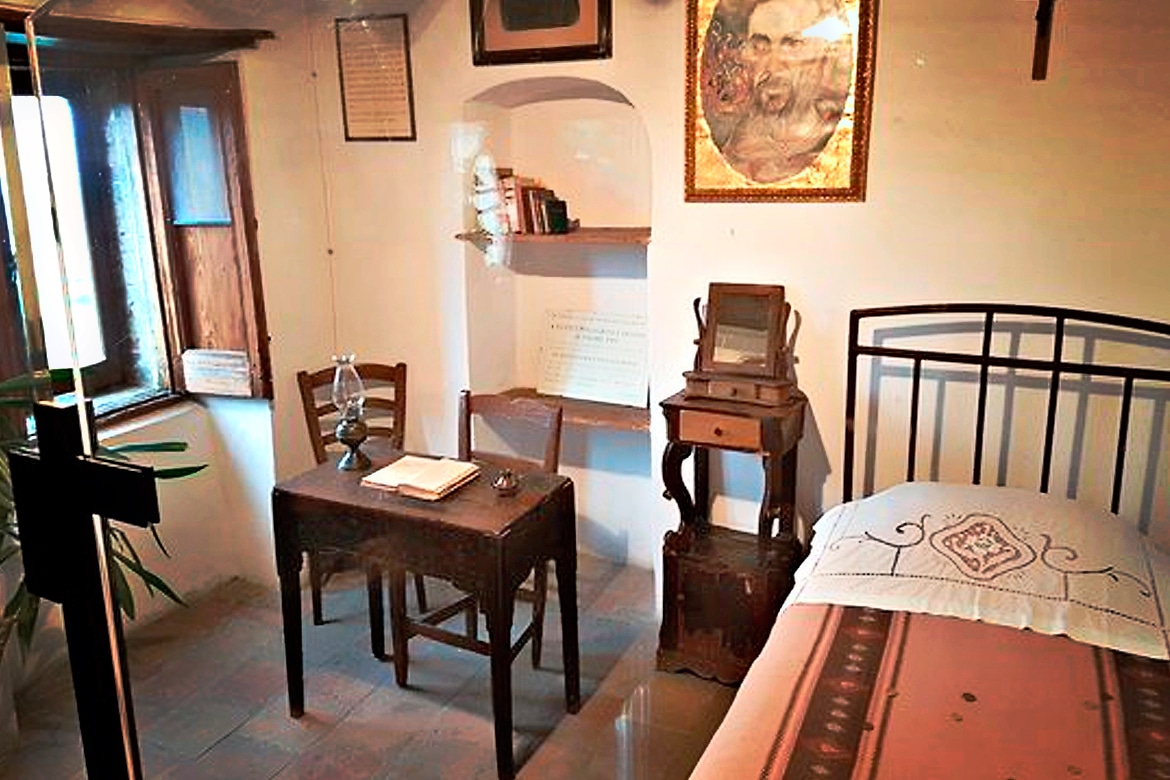The hermitage on the rock known as la Torretta di Padre Pio in Pietrelcina served as a place of prayer and reflection during a period of illness for Padre Pio. In this quiet retreat, he wrote letters to his spiritual directors, sharing mystical visions and experiences of divine consolation.
La Torretta: A Refuge of Solitude and Prayer
Set atop a rocky outcrop, once part of the ruins of an ancient baronial castle in Pietrelcina, a picturesque village in Italy’s Campania region, the hermitage on the rock—known as La Torretta—stands as a beacon of history and spirituality. Access to the austere room, built above the rock, requires climbing a steep staircase, symbolizing the ascent to a space that is both simple and profoundly meaningful.

Between 1909 and 1912, during a time of illness that kept him away from the Capuchin friars’ convent, the young Padre Pio found in La Torretta a modest yet vital refuge. According to the rules of the order, friars unable to stay in their convents were not permitted to live with their families. To comply, Padre Pio’s parents rented this small room, providing Francesco Forgione, as he was then known, with a place to continue his spiritual journey despite his frail health. The simplicity of La Torretta, perched above the rocky terrain, transformed it into a site of deep contemplation. Padre Pio spent countless hours in prayer and meditation, drawing comfort and strength from his communion with God.
Letters and Mystical Experiences
During this time, Padre Pio’s pen became an instrument for revealing his innermost experiences. He wrote numerous letters to his spiritual directors, Father Benedetto Nardella and Father Agostino Daniele, confiding his inner struggles and the mystical graces he received. These letters, deeply spiritual, recount extraordinary visions: “The Madonna, Jesus, my Guardian Angel, and St. Francis were close to me. They guided and consoled me during these times of trial.” In the solitude of La Torretta, the young friar experienced an intense union with the divine, which compensated for the physical and spiritual suffering of those challenging years. La Torretta, austere and built above the rock, became much more than a simple dwelling. It served as a sacred space where Padre Pio deepened his relationship with God, endured profound trials, and found solace in the presence of the divine.






